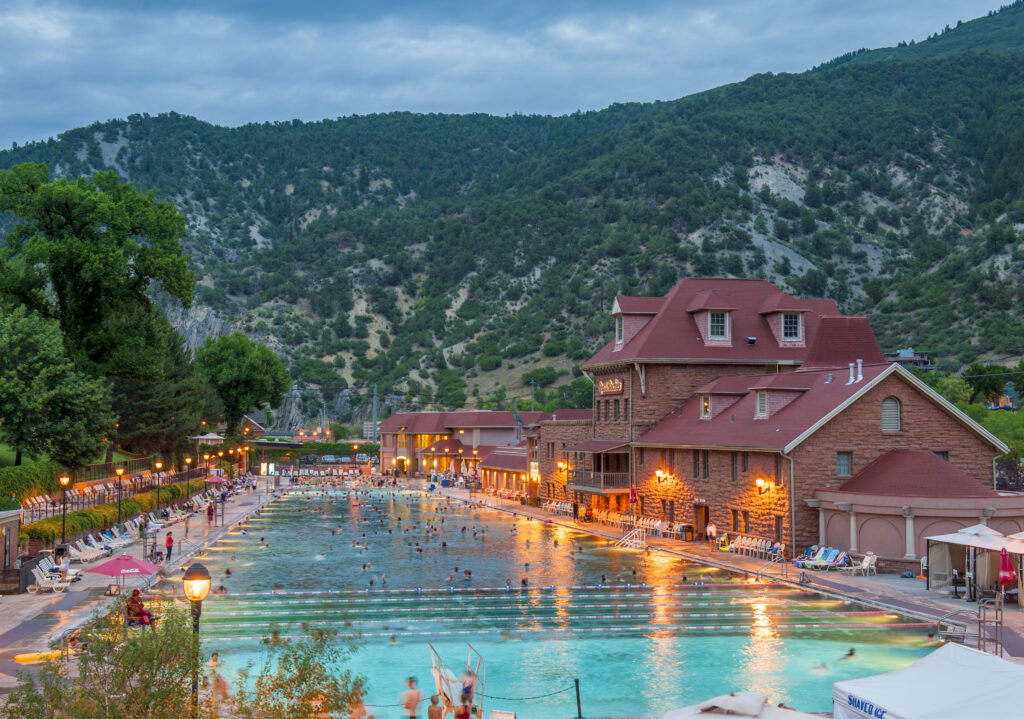Our origin stories probably can’t help but embellish, subtract, exaggerate, inflate and occasionally falsify. But they are also identity markers that matter.
It’s a cliché to ask a writer or if their recent work is “telling their story.” But its easy to see why we are interested. As the analyst Walter Fisher once noted, we are part of the tribe of ‘homo narrans,’ a segment of the living world which thrives on narratives told and retold. The story format is the primary way we understand the world. And what can be more natural than the pleasure of recounting a version of our past that others want to hear? We all have our origin stories. Most of us carry them like I.D. cards, ready to be deployed when someone asks. As should be expected, some are forgeries. Others can be revealing or painfully accurate.
Steven Spielberg’s just released film, The Fabelmans (2022), offers a fictionalized story of his own family. Sammy is at the film’s center and stands in for Spielberg himself: a film nut energized after seeing the technicolor circus spectacle, The Greatest Show on Earth (1952). He was among many of us heading off to a first film experience that was an over-the-top melodrama of life and death under the big top. The circus traveled to cities along its itinerary by train, leaving director Cecil B. DeMille the opportunity to whip up a story about confusion and bravery in the aftermath of a nighttime crash on route. As The Fabelmans would have it, it was enough to hook young Sammy for the rest of his life.
The story written by Tony Kushner mostly takes place within Sammy’s family. Skeptical of his son’s sudden conversion to 8-millmeter filmmaking, Sammy’s father creates the familiar dynamic of a budding auteur facing the headwinds of a suspicious father. It’s mom, a musician, who will provide the psychological support he needs. And Spielberg certainly had an abundance of enthusiasm, even to the extent of allegedly sneaking onto the Universal lot years later, hoping to pass as someone who belonged.
Spielberg’s early life has been well documented in several good biographies, so the contours of his earlier years are mostly well known. But this mega-release raises the interesting question of how the rest of us negotiate the occasional need to account for our early influences and enthusiasms. I’m sure my own thumbnail account written into the preface of a book1 leaves out a lot: perhaps the result of a faulty memory, selective remembering, and the inevitable temptation to straighten out lines that were far less apparent then implied in the retelling. Our origin stories probably can’t help but embellish, subtract, exaggerate, inflate and occasionally falsify. For example, I now rhapsodize about the “ideal” family vacations my Denver-based family took to the mountain hamlet of Glenwood Springs.
 It had the advantages of being at the base of the spectacular walls of Glenwood Canyon, in addition to being a meeting point for the famed California Zephyrs, one heading east to Chicago and the other, west to Salt Lake City and San Francisco. The site of the train creeping along a narrow ledge above a turbulent Colorado River was its own reward. While others might have barely noticed the train, I lived just to see it pass. Then, too, there was Glenwood’s block long outdoor pool fed by hot springs. I now forget how water-phobic I was, choosing to remember the better memories of the mountains, the warm water, and a father who was always nearby.
It had the advantages of being at the base of the spectacular walls of Glenwood Canyon, in addition to being a meeting point for the famed California Zephyrs, one heading east to Chicago and the other, west to Salt Lake City and San Francisco. The site of the train creeping along a narrow ledge above a turbulent Colorado River was its own reward. While others might have barely noticed the train, I lived just to see it pass. Then, too, there was Glenwood’s block long outdoor pool fed by hot springs. I now forget how water-phobic I was, choosing to remember the better memories of the mountains, the warm water, and a father who was always nearby.
Some of us hear about the early years of others in Hawaii, in a housing tract a mile from Disneyland, or at the edge of a shore that others can only dream of. But, of course, a location is perhaps the least important part of origin stories that cut deep. The fullest accounts surely are dense with detail about parents, siblings, schoolmates and the gathering tide of friends that accumulate with time. More than geography, they will probably take the center of influences that shape what most of us have become. Writer Annie Dillard grew up in a comfortable Pittsburgh family, transforming a prosaic life into a compelling narrative. She first met the world in the leafy precincts of Squirrel Hill, in a house “full of comedians” and a city open to adventures. Dillard eventually won a Pulitzer Prize for her non-fiction.
And then there are the fakes: accounts of athletic prowess fabricated to push a high schooler into an athletic scholarship, or stories of Tom Ripleys or Anna Sorokins fabricating roots would that give them access to wealth or power.
The mythmaking of the self-made success has not faded. We still want to skew our stories to emphasize the marks we’ve left on the planet or the successes we need to share. One of the most impressive origin stories I’ve encountered is retold in playwright and director Moss Hart’s autobiography, Act One (1959). Born in the Bronx into desperate poverty, Hart eventually found his way into the theater world and, after many years, success as a writer and director. It’s the kind of bootstraps success story we still want to believe about what American life may still allow. Living large in a society that poses real risks is a reward we frequently seek to share.
![]()
1Becoming a ‘Sound Centric’ Kid (Preface to The Sonic Imperative)
Because life tends to send us in circles rather than straight lines, we can sometimes catch glimpses of our earlier selves in loops of familiar experience we revisit. Look hard enough, and we see at least some recognizable landmarks that we remember passing before. It is those kinds of moments that can make it seem like it is actually a subject that picks its author. That is a feeling that grew throughout this project. When it comes to the life of the ear, we all have our stories. In my case a pattern emerges early and turns into a persistent curiosity, a magnetic north, always steering my interest to some new auditory experience. A passion for sound began as another 1950s adolescent boy who built radio crystal sets and worked to get a scouting patch for knowing Morris Code. It was clear even then that radio rivaled food and water as one of the essentials for life. That first “cat’s whisker” receiver was one of many breadcrumbs dropped over time, creating a meandering trail that rarely strayed from the geography of sound. When I did take a wrong turn, as with a hand-me-down movie projector that rewarded my tinkering with random electrocutions, the message to stick to the auditory world was clearly received. People and objects that delivered sound in one form or another always seemed to hold the most fascination, like weekend nights listening to KOA radio’s live bands from Denver’s old Elitch Gardens. It had to be KOA, the 50,000-watt giant standing alone out on the prairie. At night and under a cloudless sky, it was an Art Deco apparition glowing in the dark beyond the city’s lights. Fact was then stranger than fiction to know that the high voltage transmitters inside came into their own at dusk, sending a powerful clear-channel signal deep into six other states. If it wasn’t radio as a subject, it was a one-tube electronics kit purposefully miswired to become a nuisance transmitter sending the sounds of my 45s and a crackle of interference to the rest the neighborhood; or a series of shortwave sets attached to a hundred feet of naked copper wire surreptitiously attached to a utility pole in the alley behind our house. New long-playing records joined the singles on a two-tone “suitcase” phonograph. Ravel’s tonal fireworks and the Eastman School’s Frederick Fennell were favorites purloined from our modest household collection, when a family friend roused an interest in becoming the next Sonny Payne or Buddy Rich. Drum lessons began and an assortment of teen bands followed, producing a musician good enough to play in a statewide ensemble, but who also made more of an impression falling off a stage mid-performance than mastering the forty rudiments of percussion. I was also in the distracted post-war generation that had been captured by the world’s rapidly expanding trove of recordings that promised nirvana and sometimes delivered. Bargain label reissues of classical and jazz albums from Sam Goody and Tower Records began to accumulate, as did recordings of European organs that mystified friends looking through my stash for the latest from The Doors. Instead, they found Bach and Buxtehude hanging out on the shelf with Basie and Brubeck. Childhood obsessions may eventually extinguish themselves, but attraction to the aural continued at a campus radio station that was a nighttime refuge from sweltering summer days at a steel plant in California’s Central Valley. There were also rare weekend escapes with parents to nearby casinos in the Sierras. They gave an underage stowaway the chance to hear flawless musicians playing over the din of the slot machines. The cooler fall would bring a new semester and a course in the Psychology of Art that fed this sound-centric student’s interest in writing a paper on Beethoven’s deafness. The research led to an abundance of sophomore empathy for the stricken composer, as well as an art history professor annoyed at the escapee who went over the walls of his well-ordered discipline. But “speech” was my college major, later deepening into graduate work in one of the oldest of the auditory arts, classical rhetoric. Orality and fluency mattered to the Greeks. A person’s mark as a leader rested on their skills to face an audience and win them over with the power of vocalized appeals. It was all to play out in the circularity of returning to where the journey had begun a few years earlier, but now in the person of an academic who taught courses as utterly different as rhetorical theory and radio production. It was a better fit than it seemed, and reason enough to prod young and more hip film colleagues with the dusty old canard that radio is like video, “except the pictures are better.” Back then, audiology and the mechanics of hearing seemed like a required curricular sideshow in widening discipline. But as these pages reflect, it was impossible to miss the passion of instructors who insisted that aural media represented an essential gateway to language. They knew that the extraordinary processes that support listening represent a huge part of the human experience. I should have paid more attention.

